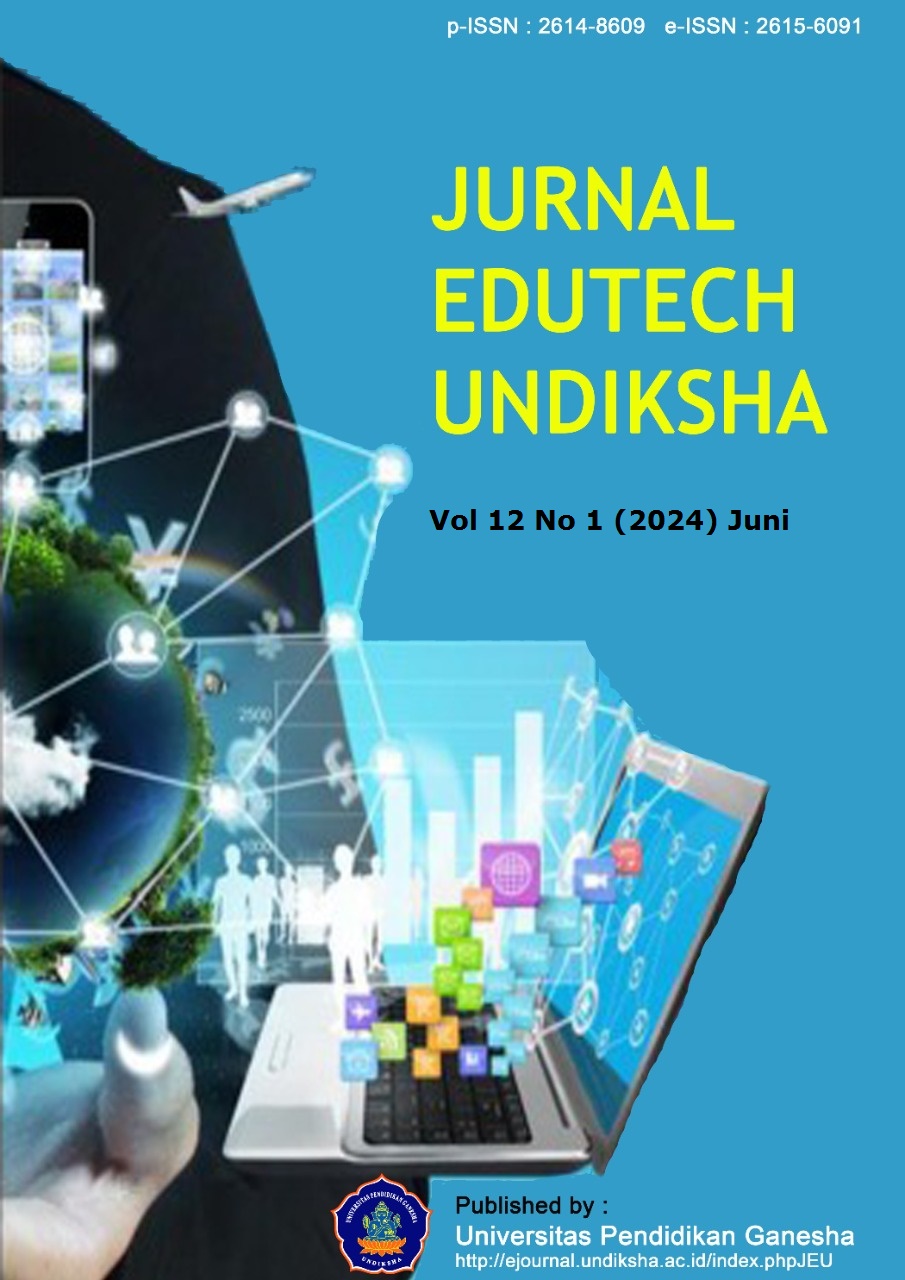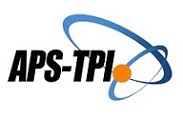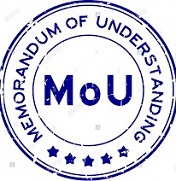Instructional Communication Management Strategy in Curriculum Development of Indonesia Higher Education Institutions
DOI:
https://doi.org/10.23887/jeu.v12i1.65178Keywords:
Instructional Communication, Instructional Communication Strategies, Higher Education CurriculumAbstract
Universities need to have an educational focus by using a multicampus system that must be integrated to achieve its goals. Therefore, an instructional communication strategy needs to be implemented to support management in building communication. This study is to analyze instructional communication strategies and lecturer competency management policies that can be understood and implemented in the teacher education curriculum. The method used in this research is a descriptive method with a quantitative approach with data collection techniques through questionnaires regarding the teaching team's instructional communication management. The research results show that the instructional communication strategy by lecturers in the university environment has been implemented very well. Classroom learning activities, including instructional communication planning, selection of learning methods and strategies, selection of material delivery systems, and use of teaching materials, have also been carried out very well. It happens with lecturers' communication skills and support from university leaders. It hopes that the instructional communication strategy in curriculum development for lecturer educational institutions can be further developed with training related to the development of learning activities starting from lesson planning, learning methods, and strategies to aspects of assessment and evaluation.
References
Agustiana, I. G. A. T., Agustini, R., Ibrahim, M., & Tika, I. N. (2020). Perangkat Pembelajaran (RPS dan SAP) IPA Model (OPPEMEI) untuk Meningkatkan Keterampilan Berpikir Kreatif Mahasiswa PGSD. Jurnal Ilmiah Sekolah Dasar, 4(2), 309–323. https://doi.org/10.23887/jisd.v4i2.25190. DOI: https://doi.org/10.23887/jisd.v4i2.25190
Alawamleh, M., Al-Twait, L. M., & Al-Saht, G. R. (2022). The effect of online learning on communication between instructors and students during Covid-19 pandemic. Asian Education and Development Studies, 11(2), 380–400. https://doi.org/10.1108/AEDS-06-2020-0131. DOI: https://doi.org/10.1108/AEDS-06-2020-0131
Almaududi, S. (2018). Employee Performance: a Perspective of Organizational Citizenship Behavior (Ocb). Journal of Business Studies and Management Review (JBSMR), 2(1), 35–38. https://doi.org/10.22437/jbsmr.v2i1.6459.
Anda, A., Alfian, & Syas, M. (2021). Aktivitas Komunikasi Pimpinan Dalam Organisasi. AL MUNIR: Jurnal Komunikasi Dan Penyiaran Islam, 12(2), 155–165.
https://www.ejournal.uinib.ac.id/jurnal/index.php/almunir/article/viewFile/3069/2252.
Andriani, A., Dewi, I., & Halomoan, B. (2018). Development of mathematics learning strategy module, based on higher order thinking skill (HOTS) to improve mathematic communication and self efficacy on students mathematics department. Journal of Physics: Conference Series, 970(1), 12028. https://doi.org/10.1088/1742-6596/970/1/012028. DOI: https://doi.org/10.1088/1742-6596/970/1/012028
Badrianto, Y., & Permatasari, D. (2022). The Influence of Organizational Culture, Work Competence and Work Motivation on Organizational Commitment. Journal of Economics and Business Letters, 2(2), 25–29. https://doi.org/10.55942/jebl.v2i2.157. DOI: https://doi.org/10.55942/jebl.v2i2.157
Bahrozi, I. (2016). Komunikasi Dalam Manajemen Pendidikan. Fikroh: Jurnal Pemikiran Dan Pendidikan Islam, 8(2). https://doi.org/10.37812/fikroh.v8i2.2. DOI: https://doi.org/10.37812/fikroh.v8i2.2
Bazarova, N. N., & Choi, Y. H. (2014). Self-Disclosure in Social Media: Extending the Functional Approach to Disclosure Motivations and Characteristics on Social Network Sites1. Journal of Communication, 64(4), 635–657. https://doi.org/10.1111/jcom.12106. DOI: https://doi.org/10.1111/jcom.12106
Calkins, L., Wiens, P., Parker, J., & Tschinkel, R. (2023). Teacher Motivation and Self-Efficacy: How do Specific Motivations for Entering Teaching Relate to Teacher Self-Efficacy? Journal of Education, 7, 1–7. https://doi.org/10.1177/00220574221142300. DOI: https://doi.org/10.1177/00220574221142300
Farhan, W., Razmak, J., Demers, S., & Laflamme, S. (2019). E-learning systems versus instructional communication tools: Developing and testing a new e-learning user interface from the perspectives of teachers and students. Technology in Society, 59(February).
https://doi.org/10.1016/j.techsoc.2019.101192. DOI: https://doi.org/10.1016/j.techsoc.2019.101192
Fatimah, A. S., & Santiana, S. (2017). Teaching in 21St Century: Students-Teachers’ Perceptions of Technology Use in the Classroom. Script Journal: Journal of Linguistic and English Teaching, 2(2), 125. https://doi.org/10.24903/sj.v2i2.132. DOI: https://doi.org/10.24903/sj.v2i2.132
Fernández-Caramés, T. M., & Fraga-Lamas, P. (2019). Towards next generation teaching, learning, and context-aware applications for higher education: A review on blockchain, IoT, Fog and edge computing enabled smart campuses and universities. In Applied Sciences (Switzerland) (Vol. 9, Issue 21). https://doi.org/10.3390/app9214479. DOI: https://doi.org/10.3390/app9214479
Fitriansyah, R., Fatinah, L., & Syahril, M. (2020). Critical Review: Professional Development Programs to Face Open Educational Resources in Indonesia. Indonesian Journal on Learning and Advanced Education (IJOLAE), 2(2), 109–119. https://doi.org/10.23917/ijolae.v2i2.9662. DOI: https://doi.org/10.23917/ijolae.v2i2.9662
Han, F., & Ellis. (2019). RA Identifying consistent patterns of quality learning discussions in blended learning. The Internet and Higher Education, 40, 12–19,.
https://doi.org/10.1016/j.iheduc.2018.09.002. DOI: https://doi.org/10.1016/j.iheduc.2018.09.002
Hanum, N. S. (2013). Keefetifan e-learning sebagai media pembelajaran (studi evaluasi model pembelajaran e-learning SMK Telkom Sandhy Putra Purwokerto). Jurnal Pendidikan Vokasi, 3(1), 90–102. https://doi.org/10.21831/jpv.v3i1.1584. DOI: https://doi.org/10.21831/jpv.v3i1.1584
Haryadi, H. (2017). Efektifitas Strategi Pengajaran Edutainment Dengan Metode Picture And Picture Terhadap Konsentrasi Belajar Matematika Materi Pokok Himpunan Pada Siswa Kelas VII MTS. Darussalam Bermi Tahun Pelajaran, 3(2), 81. https://doi.org/10.58258/jime.v3i2.167. DOI: https://doi.org/10.58258/jime.v3i2.167
Hastuti, S., & Marzuki, I. (2021). Model Asesmen Alternatif Dalam Evaluasi Pembelajaran Di Era Pandemi Covid-19. Jurnal Kajian Islam Dan Pendidikan Tadarus Tarbawy, 3(1), 280–290. https://doi.org/10.31000/jkip.v3i1.4252. DOI: https://doi.org/10.31000/jkip.v3i1.4252
Herdiana, D., Rudiana, R., & Supriatna, S. (2021). Kejenuhan Mahasiswa dalam Mengikuti Perkuliahan Daring dan Strategi Penanggulangannya. Edunesia : Jurnal Ilmiah Pendidikan, 2(1), 293–307. https://doi.org/10.51276/edu.v2i1.128. DOI: https://doi.org/10.51276/edu.v2i1.128
Hia, N. (2017). Strategi Komunikasi Pimpinan Dalam Meningkatkan Minat Masyarakat Memasuki Akademi Manajemen Informatika Komputer Medan Business Polytechnic Di Kota Medan. Jurnal Lensa Mutiara Komunikasi, 1(2), 59–76.
http://e-journal.sari-mutiara.ac.id/index.php/JLMI/article/view/410.
Hodijah, L., Raihan, N., Ridha, N., Sherina, D., & Usep, S. (2022). Pemilihan, Pemanfaatan dan Pengguna Media dalam Proses Pembelajaran. Edukasi Nonformal, 3(2), 570–577.
https://core.ac.uk/download/pdf/553315221.pdf.
Ichsan, A. S. (2018). Gerakan Literasi Sekolah Di Sekolah Islam (Sebuah Analisis Implementasi Gls Di Mi Muhammadiyah Gunungkidul). Al-Bidayah: Jurnal Pendidikan Dasar Islam, 10(1), 69–88. https://doi.org/10.14421/al-bidayah.v10i1.189. DOI: https://doi.org/10.14421/al-bidayah.v10i1.189
Juhji, J., Rachman, M. S., & Nurjaya, N. (2020). Media Daring dan Kuantitas Pemberian Tugas Terhadap Kepuasan Belajar Mahasiswa. Al-Tarbawi Al-Haditsah: Jurnal Pendidikan Islam, 5(2), 1–15. https://doi.org/10.24235/tarbawi.v5i2.6802. DOI: https://doi.org/10.24235/tarbawi.v5i2.6802
Junaedi, A., & Sjafrizal, T. (2020). Komunikasi dosen dengan mahasiswa dalam kegiatan pembelajaran melalui metode ceramah. Jurnal Ekonomi, Sosial & Humaniora, 01(09), 30–40. https://doi.org/https://www.jurnalintelektiva.com/index.php/jurnal/article/view/116.
Kinasih, putri suri, & Nihaya, dyah maya. (2022). Determinants of The Unemployment University Graduates in Java Island. Indonesian Journal of Development Economics, 5(1), 1505–1519. https://doi.org/10.15294/EFFICIENT.V5I1.49150. DOI: https://doi.org/10.15294/efficient.v5i1.49150
Kisworo, B., & Wibisono, M. (2022). Teacher Instructional Communication on Biology Learning During a Pandemic at SMA Negeri 10 Depok. International Journal of Scientific Research in Science and Technology, 9(5), 16–20. https://doi.org/10.32628/ijsrst2294113. DOI: https://doi.org/10.32628/IJSRST2294113
Koerniantono, M. E. K. (2013). Strategi Pembelajaran. SAPA-Jurnal Kateketik Dan Pastoral, 3(1), 126–142. https://doi.org/10.33477/bs.v2i2.376. DOI: https://doi.org/10.33477/bs.v2i2.376
Kurniawan, A. W., & Puspitaningtyas, Z. (2016). Metode Penelitian Kuantitatif (Agung Widhi Kurniawan) (z-lib.org (1st ed.). Pandiva Buku.
Lassoued, Z., Alhendawi, M., & Bashitialshaaer, R. (2020). An exploratory study of the obstacles for achieving quality in distance learning during the covid-19 pandemic. Education Sciences, 10(9), 1–13. https://doi.org/10.3390/educsci10090232. DOI: https://doi.org/10.3390/educsci10090232
Lyon, A. R., Coifman, J., Cook, H., McRee, E., Liu, F. F., Ludwig, K., & McCauley, E. (2021). The Cognitive Walkthrough for Implementation Strategies (CWIS): a pragmatic method for assessing implementation strategy usability. Implementation Science Communications, 2(1), 1–16. https://doi.org/10.1186/s43058-021-00183-0. DOI: https://doi.org/10.1186/s43058-021-00183-0
Ma, Y., & Qin, X. (2021). Measurement Invariance of Information, Communication, and Technology (ICT) Engagement and Its Relationship with Student Academic Literacy: Evidence from PISA 2018. Studies in Educational Evaluation, 68, 100982. https://doi.org/10.1016/j.stueduc.2021.100982. DOI: https://doi.org/10.1016/j.stueduc.2021.100982
Manik, S., & Hutagaol, J. (2015). An Analysis on Teachers’ Politeness Strategy and Student’s Compliance in Teaching Learning Process at SD Negeri 024184 Binjai Timur Binjai –North Sumatra-Indonesia. English Language Teaching, 8(8), 152–170. https://doi.org/10.5539/elt.v8n8p152. DOI: https://doi.org/10.5539/elt.v8n8p152
Marbun, P. (2019). Strategi pembelajaran transformatif. Diegesis: Jurnal Teologi, 4(2), 41–50. https://doi.org/10.46933/DGS.vol4i241-49. DOI: https://doi.org/10.46933/DGS.vol4i241-49
Martin, K., & Eliza, F. (2020). Pengembangan Assessment dalam Pembelajaran Daring untuk Mata Kuliah Pengukuran dan Instrumen. Jurnal Pendidikan Teknik Elektro, 1(1), 114–117. https://doi.org/10.24036/jpte.v1i1.50. DOI: https://doi.org/10.24036/jpte.v1i1.50
Melianti, Y. (2009). Pengaruh Metode Pemberian Tugas Terhadap Hasil Belajar Mahasiswa. Jurnal Kewarganegaraan, 12(1), 1–21. https://digilib.unimed.ac.id/id/eprint/197/.
Mutawakkil, M., & Nuraedah, N. (2019). Gaya Komunikasi Dosen dalam Pembelajaran Mahasiswa. Communicatus: Jurnal Ilmu Komunikasi, 3(2), 25–42. https://doi.org/10.15575/cjik.v3i2.5765. DOI: https://doi.org/10.15575/cjik.v3i2.5765
Oktavia, Z., & Ridlo, S. (2020). Critical Thinking Skills Reviewed from Communication Skills of the Primary School Students in STEM-Based Project-Based Learning Model. Journal of Primary Education, 9(3), 311–320. https://doi.org/10.15294/jpe.v9i3.27573. DOI: https://doi.org/10.15294/jpe.v9i3.27573
Palangda, L., Walukow, M. R., Naharia, O., Wullur, M. N., & Sumual, S. D. M. (2023). Implementation of Merdeka Belajar Policy: Constraints in the Pancasila Students Profile Strengthening Project. International Journal of Multidisciplinary Approach Research and Science, 1(02), 104–116. https://doi.org/10.59653/ijmars.v1i02.62. DOI: https://doi.org/10.59653/ijmars.v1i02.62
Pambayun, E. L. (2013). Aplikasi Model Komunikasi Instruksional Pada Mata Kuliah Pendidikan Kewarganegaraan Di Perguruan Tinggi (Studi Kasus Observasional Perilaku Instruksional Dosen. ILMU Dan BUDAYA, 37(32), 3561–3570.
Potter, W. J., & Thai, C. (2019). Reviewing media literacy intervention studies for validity. Review of Communication Research, 7, 38–66. https://doi.org/10.12840/ISSN.2255-4165.018. DOI: https://doi.org/10.12840/ISSN.2255-4165.018
Prayitno, S. (2021). Manajemen Komunikasi Pemasaran Terpadu. Rajawali Press.
Purnasari, P. D., & Sadewo, Y. D. (2020). Perbaikan Kualitas Pembelajaran Melalui Pelatihan Pemilihan Model Pembelajaran Dan Pemanfaatan Media Ajar Di Sekolah Dasar Wilayah Perbatasan. Publikasi Pendidikan, 10(2), 125. https://doi.org/10.26858/publikan.v10i2.13846. DOI: https://doi.org/10.26858/publikan.v10i2.13846
Rahmawati, N. S., Bernard, M., & Akbar, P. (2019). Analisis Kemampuan Komunikasi Matematik Siswa Smk Pada Materi Sistem Persamaan Linier Dua Variabel (SPLDV. Journal on Education, 1(2), 344–352. http://www.jonedu.org/index.php/joe/article/view/74. DOI: https://doi.org/10.31004/cendekia.v3i1.87
Riduwan. (2012). Skala Pengukuran Variabel-Variabel Penelitian. Alfabeta.
Rusilowati, A. (2012). Pengembangan Indikator Evaluasi Proses Perkuliahan Di Perguruan Tinggi. Lembaran Ilmu Kependidikan, 37(2), 1–8. https://doi.org/10.15294/lik.v37i2.508.
Safdar, M., Hussain, A., Shah, I., & Rifat, Q. (2012). Concept Maps : An Instructional Tool to Facilitate Meaningful Learning. European Journal of Educational Research, 3(1), 55–64.
https://doi.org/10.12973/eu-jer.1.1.55. DOI: https://doi.org/10.12973/eu-jer.1.1.55
Senthamarai, S. (2018). Interactive teaching strategies. Journal of Applied and Advanced Research, 3(1), 38–38. https://doi.org/10.21839/jaar.2018.v3S1.166. DOI: https://doi.org/10.21839/jaar.2018.v3iS1.166
Serevina, V., Sunaryo, R., Astra, I. M., & Sari, I. J. (2018). Development of E-Module Based on Problem Based Learning (PBL) on Heat and Temperature to Improve Student’s Science Process Skill. TOJET: The Turkish Online Journal of Educational Technology –, 17(3), 26–36.
https://eric.ed.gov/?id=EJ1184205.
Shazia, N., & Khan, M. S. (2015). The Impact of Time Management on the Students ’ Academic Achievements. Journal of Literature, Languages and Linguistics, 11, 66–72.
Sihite, M., & Saleh, A. (2019). Peran Kepemimpinan dalam meningkatkan daya saing perguruan tinggi: tinjauan konseptual. Jurnal Ilmu Manajemen METHONOMIX, 2(1), 29–44. https://ejurnal.methodist.ac.id/index.php/methonomix/article/view/1068.
Simanjuntak, D., & Sunarya, D. (2022). Peran Media Pembelajaran dalam Komunikasi Instruksional Sekolah Vokasi Pariwisata di Jawa Barat. Tourism Scientific Journal, 7(2), 283–300. http://jurnal.stiepar.ac.id/index.php/tsj/article/view/193. DOI: https://doi.org/10.32659/tsj.v7i2.193
Sinambela, L. P. (2014). Metodologi Penelitian Kuantitatif : Untuk Bidang Ilmu Administrasi, Kebijakan Publik, Ekonomi, Sosiologi, Komunikasi dan ilmu sosial lainnya. Graha Ilmu.
Sitohang, H., Mohamed, Z., & Ismail, S. (2022). Achieving the Use of National Employment Work Competency Standards for Training Workers in the Construction Sector in Indonesia. Budapest International Research and Critics Institute-Journal (BIRCI-Journal), 5(1), 5165–5178.
https://doi.org/10.33258/birci.v5i1.4216.
Su, C.-Y., Li, Y.-H., & Chen, C.-H. (2021). Understanding the Behavioural Patterns of University Teachers Toward Using a Learning Management System. International Journal of Emerging Technologies in Learning (IJET, 16(14), 129–145. https://doi.org/10.3991/ijet.v16i14.22685. DOI: https://doi.org/10.3991/ijet.v16i14.22685
Sudiarta, I. N. (2016). Upaya Penggunaan Rencana Pembelajaran Semester dalam Menunjang Proses Belajar Mengajar di FKIP Universitas Dwijendra Denpasar. Jurnal Kajian Pendidikan Widya Accarya FKIP Universitas Dwijendra, 5(1), 55–66. https://doi.org/10.46650/wa.5.1.233.%25p.
Suprihatini, T. (2017). Kompetensi Komunikasi Dosen Dan Konsep Diri Mahasiswa Terhadap Prestasi Akademik Mahasiswa. Mediakita, 1(2), 115–128. https://doi.org/10.30762/mediakita.v1i2.361. DOI: https://doi.org/10.30762/mediakita.v1i2.361
Susanto, R., Syofyan, H., Febriani, E., Nisa, M. A., Oktafiani, O., Yolanda, Y. D., Tobing, L. A. L., Diani, S. B., Hendrawan, B. B., Alfira, A., Cahyaningrum, D. E. N., Oktavia, H., & Nurlinda, B. D. (2021). PKM Pemberdayaan Keterampilan Model Komunikasi Instruksional Guru SD Duri Kepa 05. International Journal of Community Service Learning, 5(2), 84–94. https://doi.org/10.23887/ijcsl.v5i2.36635. DOI: https://doi.org/10.23887/ijcsl.v5i2.36635
Swaminathan, S., & Jawahar, P. D. (2013). Job Satisfaction As A Predictor Of Organizational Citizenship Behavior: An Empirical Study. Global Journal of Business Research, 7(1), 71–80. https://papers.ssrn.com/sol3/papers.cfm?abstract_id=2147886.
Tafonao, T. (2018). Peranan Media Pembelajaran Dalam Meningkatkan Minat Belajar Mahasiswa. Jurnal Komunikasi Pendidikan, 2(2), 103. https://doi.org/10.32585/jkp.v2i2.113. DOI: https://doi.org/10.32585/jkp.v2i2.113
Thadi, R. (2019). Proses Komunikasi Instruksional dalam Pembelajaran Vokasional. Journal of Education and Instruction (JOEAI), 2(1), 49–55. https://doi.org/10.31539/joeai.v2i1.614. DOI: https://doi.org/10.31539/joeai.v2i1.614
Ulfa, M., & Saifuddin. (2018). Terampil Memilih dan Menggunakan Metode Pembelajaran. Suhuf, 30(1), 35–56. https://doi.org/10.23917/suhuf.v30i1.6721.
Ulfah, A., & Jumaiyah. (2018). Pengembangan Bahan Ajar Mata Kuliah Bahasa Indonesia di Perguruan Tinggi Kabupaten Lamongan. Jurnal Inovasi Pendidikan, 2(1), 75–81. DOI: https://doi.org/10.32332/an-nabighoh.v20i01.1130
https://jim.unisma.ac.id/index.php/fkip/article/view/1730.
Vera, N. (2020). Strategi Komunikasi Dosen Dan Mahasiswa Dalam Meningkatkan Kualitas Pembelajaran Daring Selama Pandemic Covid-19. Avant Garde, 8(2), 165.
https://doi.org/10.36080/ag.v8i2.1134. DOI: https://doi.org/10.36080/ag.v8i2.1134
Wahyudin, D., Darmawan, D., & Suryadi, E. (2021). Digital Strategic Communication Management in Developing Curriculum of Universitas Pendidikan Indonesia. Journal of Hunan University Natural Sciences. http://jonuns.com/index.php/journal/article/view/769%0Ahttp://jonuns.com/index.php/journal/article/download/769/765.
Yawisah, U., Akla, A., Umam, A. K., Asad, M., & Wahyudin, W. (2022). The implications of learning management system on education quality in the new normal era: Evidence from Islamic higher education. Journal of Social Studies Education Research, 13(2), 147–169.
https://papers.ssrn.com/sol3/papers.cfm?abstract_id=4643373.
Zakiah, K., & Umar, M. (2006). Komunikasi Instruksional dalam Proses Pembelajaran Mahasiswa. Mediator: Jurnal Komunikasi, 7(1), 125–138. https://doi.org/10.29313/mediator.v7i1.1221. DOI: https://doi.org/10.29313/mediator.v7i1.1221
Zhang, H., Yu, L., Ji, M., Cui, Y., Liu, D., Li, Y., Liu, H., & Wang, Y. (2020). Investigating high school students’ perceptions and presences under VR learning environment. Interactive Learning Environments, 28(5), 635–655. https://doi.org/10.1080/10494820.2019.1709211. DOI: https://doi.org/10.1080/10494820.2019.1709211
Zubaidah, S. (2022). Strategi Komunikasi Instruksional Guru Privat Alquran pada Anak Usia Dini di Alifiqra Medan. Journal of Legal and Cultural Analytics, 1(3), 171–182.
https://doi.org/10.55927/jlca.v1i3.1187. DOI: https://doi.org/10.55927/jlca.v1i3.1187
Downloads
Published
How to Cite
Issue
Section
License
Copyright (c) 2023 Laskmi Dewi, Nanda Khaerunisa Syafitri, Dinn Wahyudin, Deni Darmawan, Yulia Rahmawati

This work is licensed under a Creative Commons Attribution-ShareAlike 4.0 International License.
Authors who publish with the Jurnal Edutech Undiksha (JEU) agree to the following terms:
- Authors retain copyright and grant the journal the right of first publication with the work simultaneously licensed under an Attribution-ShareAlike 4.0 International (CC BY-SA 4.0) that allows others to share the work with an acknowledgment of the work's authorship and initial publication in this journal.
- Authors are able to enter into separate, additional contractual arrangements for the non-exclusive distribution of the journal's published version of the work (e.g., post it to an institutional repository or publish it in a book), with an acknowledgment of its initial publication in this journal.
- Authors are permitted and encouraged to post their work online (e.g., in institutional repositories or on their website) prior to and during the submission process, as it can lead to productive exchanges, as well as earlier and greater citation of published work. (See The Effect of Open Access)








